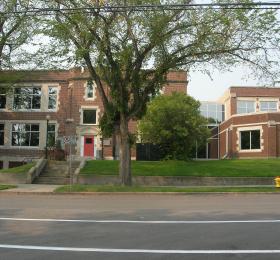Bedford Road Collegiate
- Regular
Description of the Historic Place
Bedford Road Collegiate is a large two storey brick building located in the neighbourhood of Caswell Hill. Constructed in 1922 at 722 Bedford Road, the school is Saskatoon’s second oldest high school, and the first high school built on the west side of the South Saskatchewan River.
Heritage Value
Saskatoon's first-born generation was reaching high school age in 1915, but World War I delayed addressing the issue of educational space needs. The issue was temporarily solved by operating two Nutana schools in two different shifts at different times of the day with separate teaching staff. The location of an additional high school site was determined in a plebiscite during the 1919 municipal election, which saw the vote going to the west side of the city. It would take an additional few years until the financing for the school could be secured before its official construction and opening in 1923. By the end of that same year, Bedford Road Collegiate had over 700 students enrolled making it one of the largest amongst the Prairie Provinces.
During World War II the school provided facilities for the training of air crew as part of the Initial Training School No. 7 under the British Commonwealth Air Training Plan. Famous graduates of Bedford Road Collegiate include Roy Romanow (Premier of Saskatchewan), Ethel Catherwood (Olympian), Cyprian Enweani (Olympian), Carey Nelson (Olympian), and Jerry Friesen (CFL).
Designed by John N. Semmens, Bedford Road Collegiate has had numerous additions and renovations to modernize and address the growth of the student population in the area over the years. The school continues to be an important symbol of the expansion of the population on the west side of the city, and represents the importance of education in Saskatoon. Through the City's Heritage Awards Program, Bedford Road Collegiate received an award for restoration of a public building in 2004.
Source: City of Saskatoon Built Heritage Database
Character Defining Elements
Key elements which contribute to the heritage value of this historic resource include:
- Those features that relate to its historical value including its imposing and elaborate appearance, and its location on the west side of the city; and
- Its architecture, evident in: its brick façade, parapet roofline and castellations.

